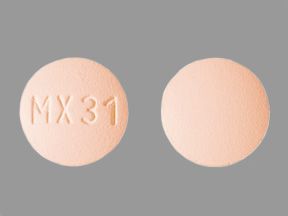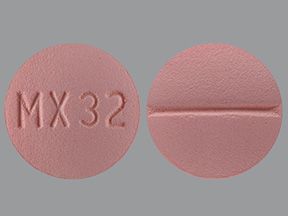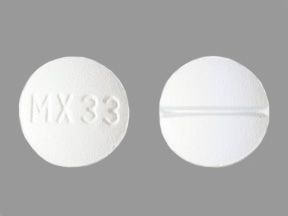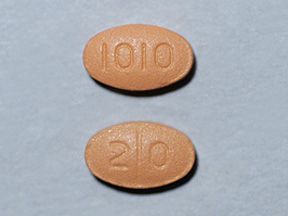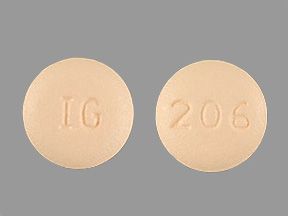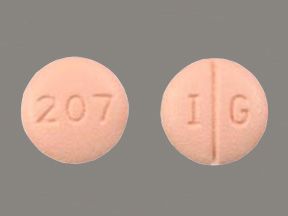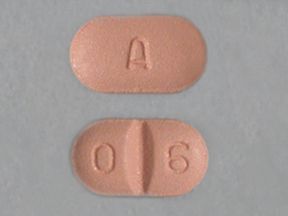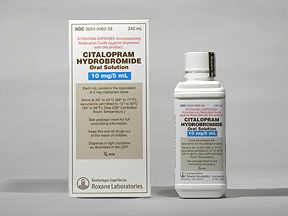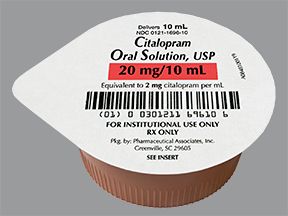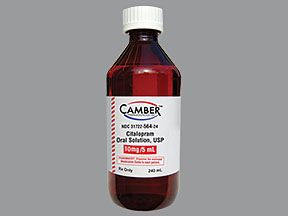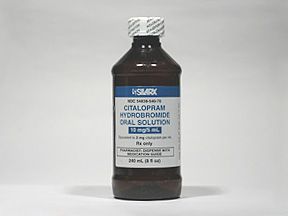This drug has a boxed warning. These are the most serious warnings from the Food and Drug Administration (FDA). Boxed warnings alert doctors and patients about drug effects that may be dangerous.
Citalopram use may increase suicidal thoughts or actions in some children, teenagers, or young adults within the first few months of treatment or when the dose is changed. Watch for these changes and call your doctor right away if you notice new or sudden changes in mood, behavior, actions, thoughts, or feelings, especially if they’re severe.
Highlights for citalopram
- Citalopram oral tablet is available as a generic drug and a brand-name drug. Brand name: Celexa.
- Citalopram also comes as an oral solution.
- This drug is used to treat depression.
- Heart rhythm changes warning: Citalopram use can cause heart rhythm changes called QT prolongation or Torsade de Pointes, which can cause sudden death.
- Warning against taking with MAOIs: Unless directed by your doctor, don’t take a monoamine oxidase inhibitor (MAOI) while you take citalopram or within 2 weeks of stopping citalopram. Also, don’t start citalopram within 2 weeks of stopping an MAOI. Taking citalopram and an MAOI too close together in time could lead to a life threatening condition called serotonin syndrome, which can cause high fever, uncontrolled muscle spasms, stiff muscles, sudden changes in heart rate or blood pressure, confusion, or loss of consciousness (passing out).
- Warning against taking with pimozide: Taking citalopram and pimozide together can cause serious heart problems.
Citalopram oral tablet is a prescription drug that’s available as the brand-name drug Celexa. It’s also available as a generic drug. Generic drugs usually cost less. In some cases, they may not be available in every strength or form as the brand-name version.
Citalopram is also available as an oral solution.
Why it’s used
Citalopram is used to treat depression. It may be used as part of a combination therapy. This means you may need to take it with other medications.
How it works
Citalopram is part of the antidepressant drug class called selective serotonin reuptake inhibitors (SSRIs). A class of drugs is a group of medications that work in a similar way. These drugs are often used to treat similar conditions. SSRIs act in your brain to increase levels of a substance called serotonin. Having more serotonin in your brain can improve symptoms of depression.
Citalopram oral tablet can cause sleepiness. It can also cause other side effects.
More common side effects
The adult side effects for this drug are slightly different from the side effects for children. Adult side effects can include:
- nausea
- sleepiness
- weakness
- dizziness
- anxiousness
- trouble sleeping
- sexual problems
- sweating
- shaking
- hunger
- dry mouth
- constipation
- diarrhea
- respiratory infections
- yawning
Children’s side effects can include the above, plus:
- increased thirst
- abnormal increase in muscle movement or agitation
- nosebleeds
- more frequent urination
- heavy menstrual periods
- slowed growth rates and weight changes
If these effects are mild, they may go away within a few days or a couple of weeks. If they’re more severe or don’t go away, talk to your doctor or pharmacist.
Serious side effects
Call your doctor right away if you have serious side effects. Call 911 if your symptoms feel life threatening or if you think you’re having a medical emergency. Serious side effects and their symptoms can include the following:
- Suicidal thoughts or actions. Symptoms can include:
- thoughts or attempts of suicide
- acting on dangerous impulses
- acting aggressively or violently
- thoughts about suicide or dying
- new or worse depression
- new or worse anxiety or panic attacks
- agitation, restlessness, anger, irritability
- trouble sleeping
- Heart rhythm changes (QT prolongation and Torsade de Pointes). Symptoms can include:
- chest pain
- fast or slow heart rate
- shortness of breath
- dizziness or fainting
- Serotonin syndrome. Symptoms can include:
- agitation, hallucinations, coma, confusion, and difficulty thinking
- coordination problems or muscle twitching (overactive reflexes)
- racing heartbeat, or high or low blood pressure
- sweating or fever
- nausea, vomiting, or diarrhea
- muscle rigidity
- Mania. Symptoms can include:
- greatly increased energy
- severe trouble sleeping
- racing thoughts
- reckless behavior
- unusually grand ideas
- excessive happiness or irritability
- Seizures. Symptoms can include:
- convulsions
- falling down or sudden loss of muscle tone
- sudden loss of awareness of surroundings
- sudden loss of urine or bowel control
- Visual problems. Symptoms can include:
- eye pain
- blurred vision
- double vision
- swelling or redness in or around your eyes
- Low salt (sodium) levels in the blood. Symptoms can include:
- headache
- weakness or feeling unsteady
- confusion, problems concentrating, or thinking or memory problems
Disclaimer: Our goal is to provide you with the most relevant and current information. However, because drugs affect each person differently, we cannot guarantee that this information includes all possible side effects. This information is not a substitute for medical advice. Always discuss possible side effects with a healthcare professional who knows your medical history.
Citalopram oral tablet can interact with other medications, vitamins, or herbs you may be taking. An interaction is when a substance changes the way a drug works. This can be harmful or prevent the drug from working well.
To help avoid interactions, your doctor should manage all of your medications carefully. Be sure to tell your doctor about all medications, vitamins, or herbs you’re taking. To find out how this drug might interact with something else you’re taking, talk with your doctor or pharmacist.
Examples of drugs that can cause interactions with citalopram are listed below.
Drugs that increase serotonin levels
A possibly life threatening condition called serotonin syndrome can occur when citalopram is used with other drugs that can increase serotonin levels in your body. This may be more likely when one of the drugs is first started or after dose increases. Examples of these drugs include:
- buspirone
- fentanyl
- linezolid
- lithium
- medications for migraines called triptans:
- almotriptan
- sumatriptan
- zolmitriptan
- amphetamines:
- dextroamphetamine
- amphetamine
- lisdexamfetamine
- methylene blue
- tricyclic antidepressants:
- amitriptyline
- imipramine
- nortriptyline
- monoamine oxidase inhibitors (MAOIs):
- isocarboxazid
- phenelzine
- selegiline
- tranylcypromine
- St. John’s wort
- tramadol
Drugs that affect heart rhythm
Citalopram shouldn’t be used with other drugs that affect your heart rhythm. Taking both citalopram and these drugs may increase your risk of heart rhythm changes that could be dangerous. Examples of these drugs include:
- amiodarone
- chlorpromazine
- methadone
- moxifloxacin
- pentamidine
- pimozide
- procainamide
- quinidine
- sotalol
- thioridazine
Drugs that increase bleeding risk
Citalopram and other antidepressant medications may increase your risk for bleeding or bruising, especially if you’re also taking other medicines that increase bleeding risk.
Other drugs that increase your risk for bleeding include:
- blood thinners:
- warfarin
- enoxaparin
- dalteparin
- heparin
- nonsteroidal anti-inflammatory drugs:
- ibuprofen
- naproxen
- ketorolac
- aspirin
Tricyclic antidepressants (TCAs)
Caution should be used when using citalopram with a TCA. This can result in higher levels of the TCA in your body and more side effects. Tricyclic antidepressants include:
- amitriptyline
- imipramine
- nortriptyline
Drugs that cause sedation or drowsiness
Taking citalopram may increase the effects of drugs that cause sedation or drowsiness. Examples of these drugs include:
- lorazepam
- alprazolam
- diazepam
- midazolam
- temazepam
- zolpidem
Cytochrome P450 2C19 inhibitors
Cytochrome P450 2C19 is a protein in our body that often helps to break down drugs, including citalopram. Some drugs are known to slow down, or inhibit, the actions of this protein. When citalopram and drugs that slow down the actions of this protein are taken together, it may result in an amount of citalopram in your body that is too high. Examples of cytochrome P450 2C19 inhibitors include:
- cimetidine
- clopidogrel
- chloramphenicol
- fluvoxamine
- omeprazole
- modafinil
Disclaimer: Our goal is to provide you with the most relevant and current information. However, because drugs interact differently in each person, we cannot guarantee that this information includes all possible interactions. This information is not a substitute for medical advice. Always speak with your healthcare provider about possible interactions with all prescription drugs, vitamins, herbs and supplements, and over-the-counter drugs that you are taking.
This drug comes with several warnings.
Allergy warning
Citalopram can cause a severe allergic reaction. Symptoms can include:
- trouble breathing
- swelling of your face, tongue, eyes, or mouth
- rash, itchy welts (hives) or blisters, along or with fever or joint pain
If you have an allergic reaction, call your doctor or local poison control center right away. If your symptoms are severe, call 911 or go to the nearest emergency room.
Don’t take this drug again if you’ve ever had an allergic reaction to it. Taking it again could be fatal (cause death).
Alcohol interaction
Don’t use alcohol with citalopram. Citalopram can cause sleepiness. It may affect your ability to make decisions, think clearly or react quickly. Drinking alcohol can increase these effects.
Warnings for people with certain health conditions
For people with heart problems: Don’t take citalopram if you have a heart problem, including a condition called congenital long QT syndrome. Taking citalopram may put you at higher risk of a serious heart rhythm change called QT prolongation, which can cause sudden death. People with slow heart rate, recent heart attack, or severe heart failure should also not take citalopram.
For people with low potassium levels: Don’t take citalopram if you have low potassium levels. Taking citalopram and having low levels of potassium may put you at higher risk of a serious heart rhythm change called QT prolongation, which can cause sudden death.
For people with low magnesium levels: Don’t take citalopram if you have low magnesium levels. Taking citalopram and having low levels of magnesium may put you at higher risk of a serious heart rhythm change called QT prolongation, which can cause sudden death.
For people with kidney disease: Talk with your doctor before using citalopram if you have kidney disease. This drug may build up and cause more side effects in people with severe kidney disease.
For people with liver disease: Citalopram is processed by the liver. If you have liver disease, the levels of this drug in your body might increase. You may have more side effects. People with liver disease shouldn’t take more than 20 mg of citalopram per day.
For people with a history of seizure disorder: Citalopram can increase your risk for seizures. Talk with your doctor before using this drug if you have a history of seizures.
Warnings for other groups
For pregnant women: Citalopram is a category C pregnancy drug. That means two things:
- Research in animals has shown adverse effects to the fetus when the mother takes the drug.
- There haven’t been enough studies done in humans to be certain how the drug might affect the fetus.
Talk with your doctor if you’re pregnant or planning to become pregnant. This drug should be used only if the potential benefit justifies the potential risk to the fetus.
For women who are breastfeeding: Citalopram passes into breast milk and may cause side effects in a child who is breastfed. Talk with your doctor if you breastfeed your child. You may need to decide whether to stop breastfeeding or stop taking this medication.
For children: Citalopram can cause changes in appetite or weight. Children and adolescents should have height and weight monitored during treatment.
This dosage information is for citalopram oral tablet. All possible dosages and drug forms may not be included here. Your dosage, drug form, and how often you take the drug will depend on:
- your age
- the condition being treated
- how severe your condition is
- other medical conditions you have
- how you react to the first dose
Forms and strengths
Brand: Celexa
- Form: oral tablet
- Strengths: 10 mg, 20 mg, 40 mg
Generic: Citalopram
- Form: oral tablet
- Strengths: 10 mg, 20 mg, 40 mg
Dosage for treatment of depression
Adult dosage (ages 18–60 years)
- The starting dose is 20 mg, taken once per day.
- Your doctor may increase the dose. Doses shouldn’t be increased more than once per week.
- The maximum dose is 40 mg, taken once per day. Don’t take more than 40 mg per day since higher doses increase the risk of QT prolongation.
Child dosage (ages 0–17 years)
It hasn’t been confirmed that citalopram is safe and effective for use in people younger than 18 years.
Senior dosage (ages 61 years and older)
- Don’t take more than 20 mg once per day. The kidneys of older adults may not work as well as they used to. This can cause your body to process drugs more slowly. As a result, more of a drug stays in your body for a longer time. This increases your risk of side effects.
- Your doctor may start you on a lowered dose or a different medication schedule. This can help keep levels of this drug from building up too much in your body.
Special considerations
- Cytochrome P450 2C19 poor metabolizers: Cytochrome P450 2C19 is a protein in our body that often helps to break down drugs, including citalopram. People who don’t have very many 2C19 proteins or have less activity of their 2C19 proteins are called “poor metabolizers.” These people shouldn’t take more than 20 mg of citalopram once per day.
- People with liver disease: Citalopram is processed by your liver. If you have liver problems, the levels of this drug in your body might increase. You may have more side effects People with liver disease shouldn’t take more than 20 mg of citalopram once per day.
Warnings
Don’t stop citalopram without talking with your doctor. Stopping citalopram too quickly can cause serious symptoms such as anxiety, irritability, high or low mood, feeling restless, changes in sleep habits, headache, sweating, nausea, dizziness, electric shock-like sensations, shaking, or confusion. Your doctor may ask you to reduce the dose gradually instead of quickly stopping the medication if these symptoms occur.
Disclaimer: Our goal is to provide you with the most relevant and current information. However, because drugs affect each person differently, we cannot guarantee that this list includes all possible dosages. This information is not a substitute for medical advice. Always to speak with your doctor or pharmacist about dosages that are right for you.
Citalopram oral tablet is used for long-term treatment. It comes with risks if you don’t take it as prescribed.
If you stop taking the drug or don’t take it at all: Your depression won’t get better. It may even get worse.
If you miss doses or don’t take the drug on schedule: Your medication may not work as well or may stop working completely. For this drug to work well, a certain amount needs to be in your body at all times.
If you take too much: You could have symptoms of serotonin syndrome. These include:
- agitation
- hallucinations
- coma
- confusion
- coordination problems
- muscle twitching
- racing heartbeat
- sweating
- fever
- nausea
- vomiting
- diarrhea
- muscle rigidity
If you have any of these symptoms, call your doctor or go to the nearest emergency department.
What to do if you miss a dose: Take your dose as soon as you remember. But if you remember just a few hours before your next scheduled dose, take only one dose. Never try to catch up by taking two doses at once. This could result in dangerous side effects.
How to tell if the drug is working: You will know that citalopram is working if you notice that your depression symptoms are less severe or happen less often. You may not notice any change in your condition for the first several weeks that you take this drug. Sometimes it can take up to 2 months to start working.
Keep these considerations in mind if your doctor prescribes citalopram oral tablet for you.
General
- You can take citalopram with or without food.
- You can cut or crush the tablet.
Storage
- Store citalopram tablets at room temperature, 77°F (25°C).
- The tablets can temporarily be stored at temperatures between 59ºF and 86°F (15ºC and 30°C).
- Keep this drug away from high temperatures.
- Don’t store this medication in moist or damp areas, such as bathrooms.
- Keep the bottle tightly closed.
Refills
A prescription for this medication is refillable. You should not need a new prescription for this medication to be refilled. Your doctor will write the number of refills authorized on your prescription.
Travel
When traveling with your medication:
- Always carry your medication with you. When flying, never put it into a checked bag. Keep it in your carry-on bag.
- Don’t worry about airport X-ray machines. They can’t hurt your medication.
- You may need to show airport staff the pharmacy label for your medication. Always carry the original prescription-labeled box with you.
- Don’t put this medication in your car’s glove compartment or leave it in the car. Be sure to avoid doing this when the weather is very hot or very cold.
Clinical monitoring
You and your doctor should monitor certain health issues. This can help make sure you stay safe while you take this drug. These issues include:
- Mental health and depression. Your doctor will monitor your symptoms of depression to make sure that citalopram is working and that you’re not having suicidal thoughts, especially during the first few months after starting citalopram or after dose changes.
- Electrolytes. Your doctor may also check the amount of potassium, magnesium, or salt (sodium) in your body at the start of treatment and at other times while you’re taking citalopram.
- Heart rhythm. If you’re at risk for QT prolongation, your doctor may also check your heart rhythm using a test called an electrocardiogram (ECG).
There are other drugs available to treat your condition. Some may be better suited for you than others. Talk to your doctor about other drug options that may work for you.
Disclaimer: Healthline has made every effort to make certain that all information is factually correct, comprehensive, and up-to-date. However, this article should not be used as a substitute for the knowledge and expertise of a licensed healthcare professional. You should always consult your doctor or other healthcare professional before taking any medication. The drug information contained herein is subject to change and is not intended to cover all possible uses, directions, precautions, warnings, drug interactions, allergic reactions, or adverse effects. The absence of warnings or other information for a given drug does not indicate that the drug or drug combination is safe, effective, or appropriate for all patients or all specific uses.

